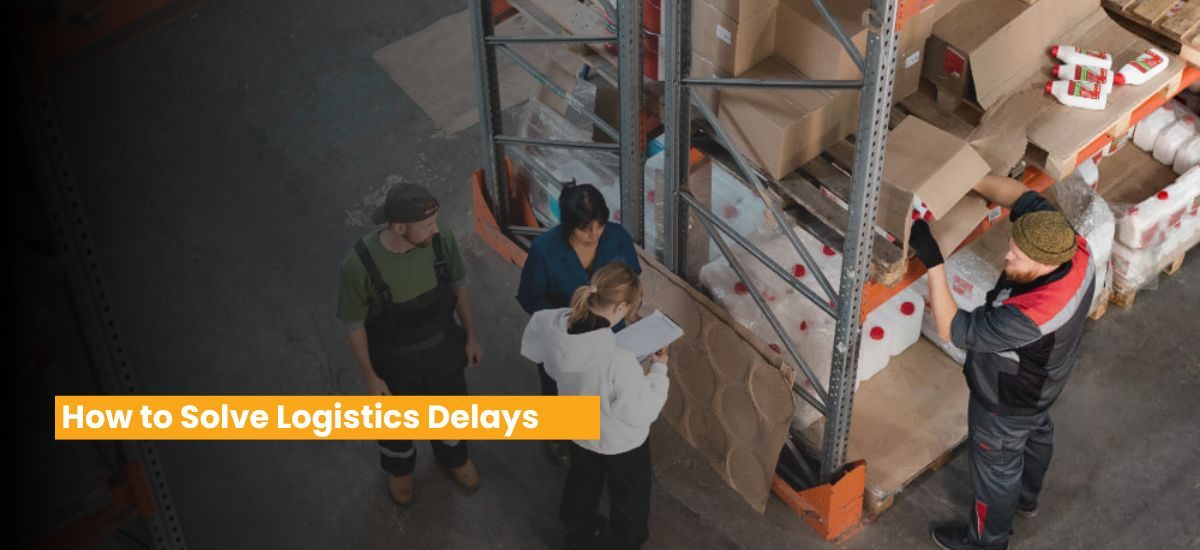How to Solve Logistics Delays

Entrepreneurs often ask us:
“Why are my shipments always delayed despite having a clear plan?”
“How can I track orders across multiple stages of production?”
“What tools should I use to streamline my supply chain?”
Logistics delays can disrupt business operations, strain client relationships, and eat into profitability. At Leap Point, your trusted business consultant, we have extensive experience in helping businesses overcome these challenges. As management consultants, we at Leappoint Advisory have often encountered entrepreneurs grappling with logistical inefficiencies. Whether it’s shipment delays, tracking issues, or coordination bottlenecks, our hands-on experience has taught us that solving such problems requires a blend of strategic thinking and tailored solutions.
Here, we share some real-world examples and detailed steps to address logistics delays effectively. As a leading business consultant in Kerala, we take pride in crafting solutions tailored to our clients’ needs.
The root causes of logistics delays vary from poor tracking systems to inefficient coordination between teams. Let’s look at how we’ve helped clients tackle these challenges.
Tackling Logistics Delays
Apparel Production Unit: Our client, a large-scale apparel manufacturer, faced consistent shipment delays due to the decentralized nature of their production process. Key production stages such as dyeing, embroidery, and stitching were handled by separate units. Tracking part quantities at each stage was cumbersome, leading to delays and miscommunication.
Solution: We adopted a strategy inspired by the airline traffic control system, where planes are tracked at airports – Flight Progress Strip. By implementing:
– A centralized tracking dashboard showing real-time updates from each production unit.
– Unique identifiers using colour codes for batches to monitor their status across dyeing, embroidery, and stitching stages.
– Automated notifications to flag delays at any stage.
The Plan:
Whiteboard Representation
– A grid or table on a whiteboard with columns labelled for each production stage: “Dyeing,” “Embroidery,” “Stitching,” etc.
– Each order represented by a “strip” (coloured or labelled cards) that moves across the columns as the order progresses.
Order Strips:
– Each strip includes details such as: Order Id, Quantity, Deadlines etc.
– Color-coded for quick status recognition: Green (On Time), Yellow (In Progress), Red (Delayed)
Simplified Tracking for a Trading Business
Another client, a medium-sized trading business, struggled to manage shipments simply because they lacked a structured tracking system. They didn’t need complex software but had no clear visibility into the status of their deliveries.
Solution: We designed a straightforward sheet-based tracking system with:
– Columns for shipment ID, order date, expected delivery date, and current status.
– Color-coded flags for shipments that were on track, delayed, or completed.
– Regular review intervals to update and act on the status.
Outcome: This simple tool significantly improved shipment visibility and ensured timely follow-ups.
Steps to Solve Logistics Delays: From Chaos to Clarity
Diagnose the Root Cause
Analyse Delays: Collect and review historical shipment data to identify recurring issues such as bottlenecks in production, delays in transit, or miscommunication.
Engage Stakeholders: Conduct discussions with production teams, logistics providers, and customers to gather insights into specific pain points.
Streamline Internal Processes
Centralized Communication: Use collaboration tools like Slack, Microsoft Teams, or enterprise resource planning (ERP) systems to enable real-time communication between departments.
Standard Operating Procedures (SOPs): Develop and document SOPs for production and logistics workflows to ensure consistency and accountability.
Process Automation: Automate repetitive tasks like order updates and notifications to save time and reduce errors.
Implement a Tracking System
Basic Tracking: For smaller businesses, start with an Excel or Google Sheets-based system to track shipments manually.
Advanced Tracking Solutions: Larger operations can adopt specialized logistics software or cloud-based platforms that provide end-to-end supply chain visibility.
Barcode and RFID Technology: Implement these tools to monitor inventory and track shipments accurately at different stages of the supply chain.
Dashboards: Build centralized dashboards to consolidate data and provide a real-time overview of shipment statuses.
Build a Contingency Plan
Alternative Suppliers: Establish relationships with backup suppliers to minimize risks associated with material shortages or delays.
Buffer Stock: Maintain a safety stock for high-demand or critical items to prevent disruptions in supply.
Emergency Protocols: Develop a protocol for handling urgent issues, such as rerouting shipments or expediting production.
Monitor and Evaluate Performance
Set KPIs: Define key performance indicators (KPIs) such as on-time delivery rate, average delay duration, and order fulfilment accuracy.
Regular Audits: Schedule periodic audits of logistics operations to assess performance and identify improvement opportunities.
Feedback Loops: Create mechanisms to gather feedback from customers and stakeholders to continuously refine processes.
Train and Empower Teams
Skill Development: Provide training to logistics and production teams on using tracking tools and adhering to SOPs.
Cross-Functional Collaboration: Encourage coordination between sales, production, and logistics teams to ensure alignment on goals.
Pro Tips from Our Experience
– Learn from Other Industries: Sometimes, solutions lie beyond your domain.
– Keep It Simple: Not every problem requires high-tech solutions. Start with basic systems and upgrade as needed.
– Involve the Entire Team: Logistics efficiency is not just the supply chain team’s responsibility. Collaboration between sales, production, and logistics teams is key.
– Leverage Technology: Invest in tools that offer scalability, like cloud-based systems, to grow with your business needs.
Final Thoughts
Logistics delays don’t just impact timelines; they affect client trust and bottom lines. At Leappoint Advisory, we understand that each business faces unique challenges and requires customized solutions. Leap Point, your trusted business consultant, specializes in addressing these issues to ensure your logistics operations run smoothly. From leveraging advanced systems to simplifying processes, our approach ensures that businesses overcome logistical hurdles and achieve seamless operations.
If logistics delays are holding your business back, reach out to us for a tailored solution. Let’s help you optimize your supply chain and build a stronger business.
